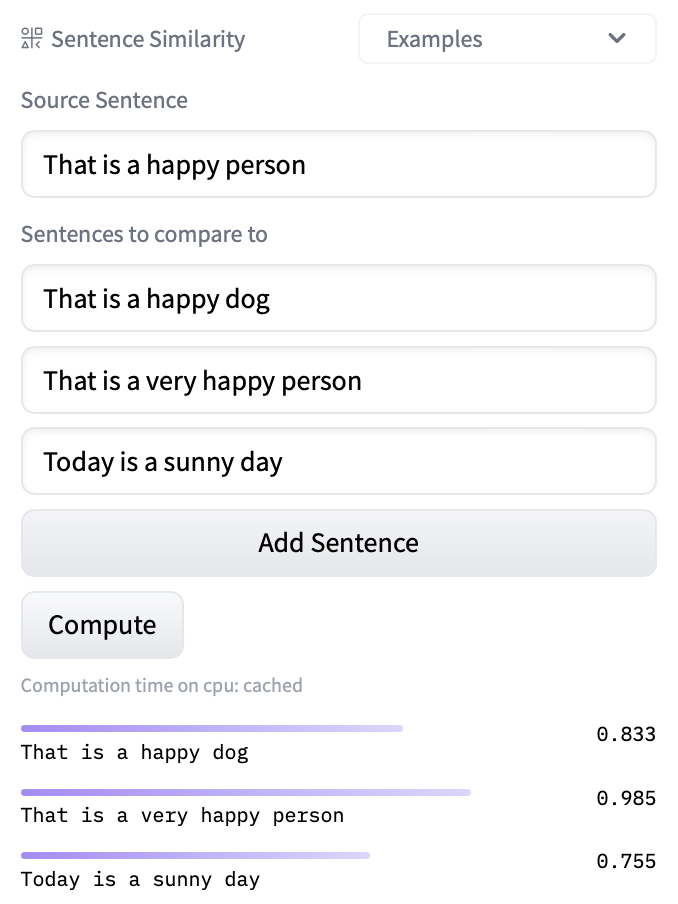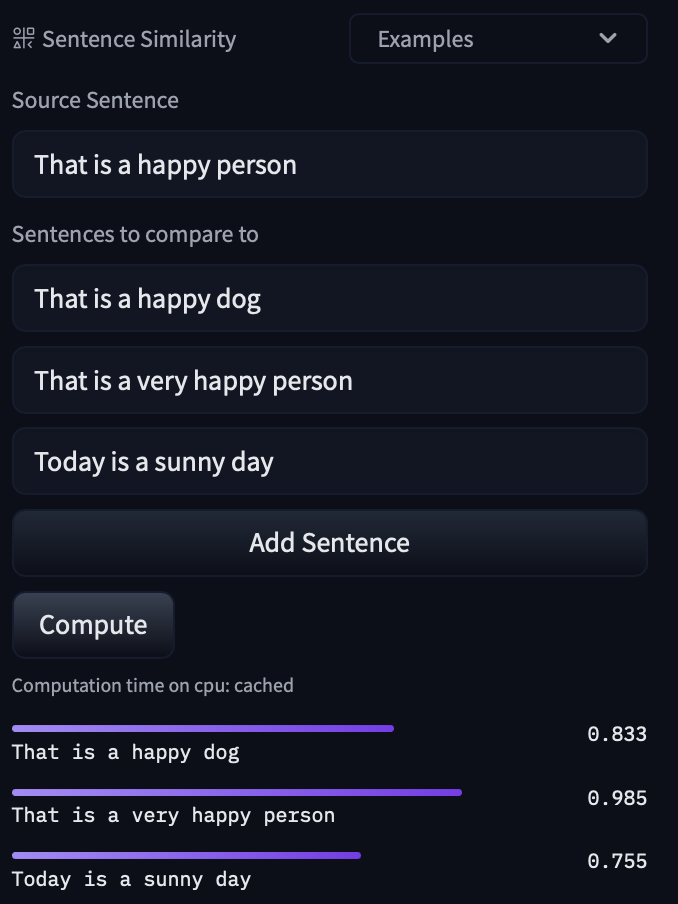Using Sentence Transformers at Hugging Face
sentence-transformers is a library that provides easy methods to compute embeddings (dense vector representations) for sentences, paragraphs and images. Texts are embedded in a vector space such that similar text is close, which enables applications such as semantic search, clustering, and retrieval.
Exploring sentence-transformers in the Hub
You can find over 500 hundred sentence-transformer models by filtering at the left of the models page. Most of these models support different tasks, such as doing feature-extraction to generate the embedding, and sentence-similarity as a way to determine how similar is a given sentence to other. You can also find an overview of the official pre-trained models in the official docs.
All models on the Hub come up with features:
- An automatically generated model card with a description, example code snippets, architecture overview, and more.
- Metadata tags that help for discoverability and contain information such as license.
- An interactive widget you can use to play out with the model directly in the browser.
- An Inference API that allows to make inference requests.


Using existing models
The pre-trained models on the Hub can be loaded with a single line of code
from sentence_transformers import SentenceTransformer
model = SentenceTransformer('model_name')Here is an example that encodes sentences and then computes the distance between them for doing semantic search.
from sentence_transformers import SentenceTransformer, util
model = SentenceTransformer('multi-qa-MiniLM-L6-cos-v1')
query_embedding = model.encode('How big is London')
passage_embedding = model.encode(['London has 9,787,426 inhabitants at the 2011 census',
'London is known for its finacial district'])
print("Similarity:", util.dot_score(query_embedding, passage_embedding))If you want to see how to load a specific model, you can click Use in sentence-transformers and you will be given a working snippet that you can load it!




Sharing your models
You can share your Sentence Transformers by using the save_to_hub method from a trained model.
from sentence_transformers import SentenceTransformer
# Load or train a model
model.save_to_hub("my_new_model")This command creates a repository with an automatically generated model card, an inference widget, example code snippets, and more! Here is an example.
Additional resources
- Sentence Transformers library.
- Sentence Transformers docs.
- Integration with Hub announcement.